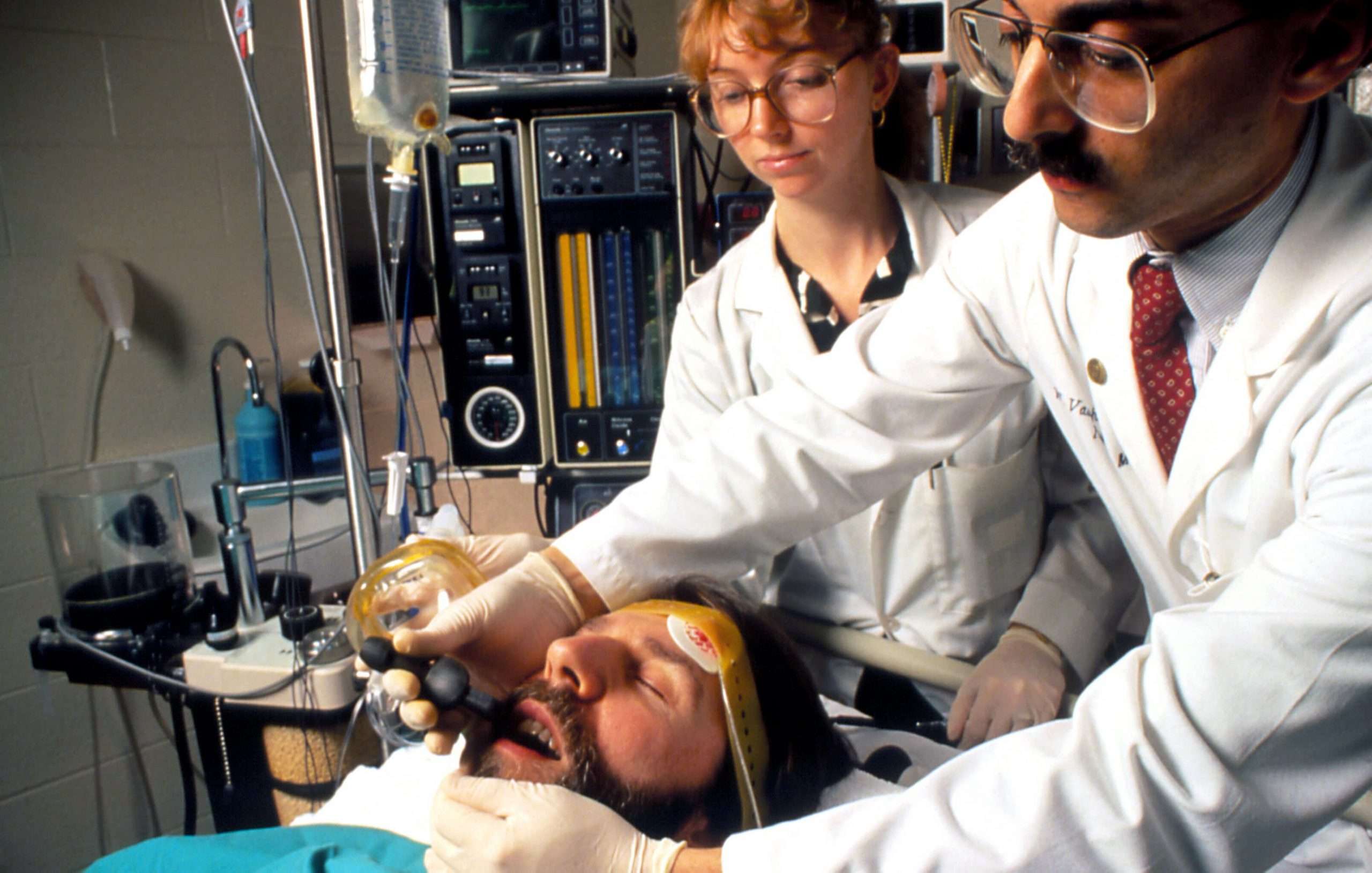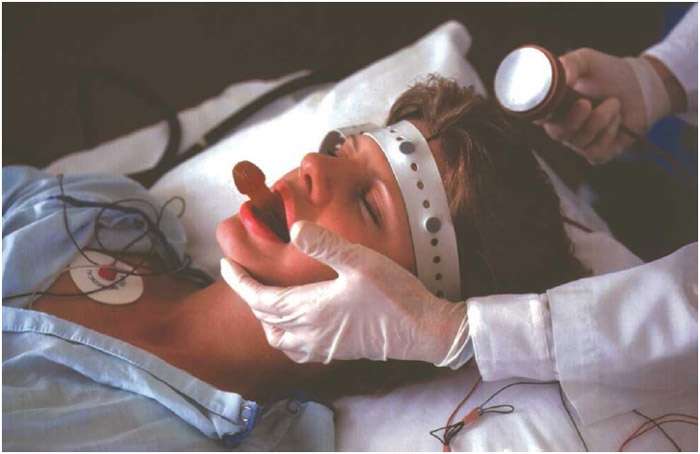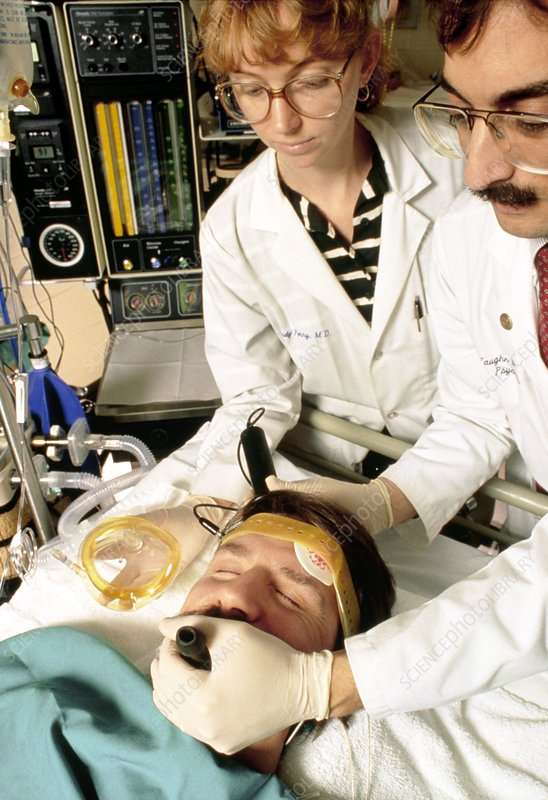Debunked 4 Myths About Electroconvulsive Therapy For Depression
Electroconvulsive therapy is one of the most effective treatments for severe mental health conditions, most commonly treatment-resistant depression. ECT also can be used to treat other psychiatric issues, such as psychosis and catatonia .
ECT is approved by the U.S. Food and Drug Administration and has been shown to be highly effective, giving some patients full reversal of severe depression symptoms. Overall, ECT is approximately 80 percent effective when a patient is a good candidate. By comparison, about 50 percent of patients respond to antidepressant medication.
ECT is primarily reserved for patients who do not respond to other types of therapy, but in some patients with severe symptoms, failure of other therapies is not a requirement.
Electroconvulsive therapy is one of the most effective treatments for severe mental health conditions, most commonly treatment-resistant depression, and can also be used to treat other psychiatric issues, such as psychosis and catatonia .
While ECT can be incredibly effective, the internet is rampant with misinformation about the therapy. People liken ECT to the outdated treatment in the movie One Flew Over the Cuckoos Nest. But thats simply not the case. Lets discuss ECT and debunk four myths about this advanced therapy.
What Problems Can Ect Treat
The National Institute for Health and Care Excellence recommends that ECT is only used to achieve quick, short-term improvements if you have:
- severe or life-threatening depression and your life is at risk so you need urgent treatment
- moderate to severe depression and other treatments such as medication and talking therapies haven’t helped you
- catatonia
- a severe or long-lasting episode of mania.
Repeated ECT is only recommended if you have previously responded well to it, or if all other options have been considered.
ECT is not recommended for ongoing management of schizophrenia, or as a routine treatment for mild to moderate depression.
You can read full guidelines on the NICE website for using ECT to treat catatonia, mania or schizophrenia, and as one of the treatments for moderate or severe depression.
Safety And Effectiveness Of Ect
However, cognitive decline was noted in some depressed patients who received ECT , and recovery from this declination was suggested to take half a year . However, whether ECT contributed more memory loss than pharmaceutical treatment is still in dispute, but the majority support the view of no additional cognitive damage ascribable to ECT than antidepressants . Moreover, less cognitive withdrawal was seen in unilateral to bilateral and ultrabrief pulse to brief pulse when the dosage was properly applied. Nonetheless, some studies found no dementia in individuals who underwent ECT , and in geriatric depressed patients, ECT even improved cognitive function .
With respect to other common side effects that occurred during ECT treatment, headache and nausea/vomiting are believed to be the most common complaints . Thankfully, in the view of severity and prevalence, the ECT recipients reported less headache and nausea/vomiting in recent studies . Furthermore, headache and nausea/vomiting usually recovery in a few hours without medical intervention. Lastly, anti-symptom therapy is safe if necessary.
Don’t Miss: Best Anxiety And Depression Podcasts
Risks And Side Effects Of Ect
The most common side effect of ECT is short-term memory loss. However, some people report that they have long-term memory loss, as well. ECT also causes a brief rise in heart rate and blood pressure during the procedure, so it may not be recommended in people with unstable heart problems. A physical examination and basic laboratory tests including an electrocardiogram are necessary before starting ECT to assure that no medical problems are present that could interfere with the safe administration of ECT.
ECT can often work quickly, but 50% or more of the people who receive this treatment will relapse within several months if there is no subsequent treatment to prevent relapse. Your doctor will typically advise a medication regimen including antidepressants, or possibly additional periodic ECT sessions to help prevent relapse.
What To Expect At Your First Appointment

The first ECT appointment may feel intimidating or scary because the process is new. Ideally, the treatment staff will fully describe the treatment to reduce fears and encourage comfort.
In most cases, the patient will remember very little of the ECT treatment. They will enter the treatment room, receive an IV, and fall asleep shortly after the staff administers the anesthesia. The patient may be awake for the electrode pads, a mouth guard, and an oxygen mask to be applied.2
Next thing they know, the person will be in the recovery room. They may feel disoriented and slightly confused. A loved one will drive them home, or they will return to their hospital room to continue the recovery process. It may take a few hours for the side effects of nausea, headache, and fatigue to pass.4
Recommended Reading: I Can Feel Myself Slipping Into Depression
Why Is Electroconvulsive Therapy Used
ECT is one of the fastest ways to relieve symptoms in severely depressed or suicidal patients, in patients who suffer from mania, and in other mental illnesses. ECT is generally used as a later treatment option when severe depression is unresponsive to other forms of therapy, or when the patient is so ill that his or her life is in danger. It also is used when these patients pose a severe threat to themselves or others, and it is dangerous to wait until medications take effect.
Is Ect Right For Me
You might benefit from ECT if:
- You have major depression, bipolar disorder or schizophrenia
- Your symptoms havent improved with medication
- You have a medical condition that prevents you from taking these medications
- You need quick and effective treatment
- Your condition is accompanied by irrational thinking or unreal perceptions
- You have had previous success with ECT
Read Also: Is Depression And Anxiety A Mental Illness
What Alternative Treatments Are Used For Depression
Alternative treatments can sometimes provide relief that traditional Western medicine cannot. While some alternative therapies have become accepted as part of modern health care practice, others still have not been proven safe or effective.
Whether or not they are scientifically proven, alternative therapies, by providing forms of relaxation and relief from stress, may have a place in healing and general health and well-being. Examples of alternative therapies include acupuncture, guided imagery, chiropractic treatments, yoga, hypnosis, biofeedback, aromatherapy, relaxation, herbal remedies, and massage.
In general, alternative therapies by themselves are reasonable to use for mild but not more severe forms of clinical depression.
Questions To Ask Your Doctor
- Am I a good candidate for ECT?
- Will I lose my memory if I go through ECT?
- What are the chances that I will develop long-term memory loss?
- Are there other kinds of brain stimulation therapies that could help me?
- How long will the results last?
- Can a pregnant woman receive ECT?
- Can children receive ECT?
Read Also: Baclofen For Anxiety And Depression
How Is Electroconvulsive Therapy Performed
Before ECT treatment, a patient is put to sleep using general anesthesia, and a muscle relaxant is given. ECT causes the patient to have a seizure. Electrodes are placed on the patients scalp and a finely controlled electric current is applied, which causes a brief seizure in the brain. Because the muscles are relaxed, the seizure will usually be limited to slight movement of the hands and feet.
Patients are carefully monitored during the treatment. The patient awakens minutes later, does not remember the treatment or events surrounding the treatment, and may feel confused. This confusion typically lasts for only a short period of time. ECT is given up to three times a week for 2 to 4 weeks.
A course of ECT is usually followed by psychotherapy and medicine under a psychiatrist’s care.
Prediction Of Response And Relapse To Ect Bioinformatics
In short, in the elderly , psychotic symptom comorbidities , postpartum depression , shorter episode duration and more severe depressive symptoms , early depression alleviation , lower NAA levels in the dACC at baseline , low genetic risk load , genetic or epigenetic modifications , and high baseline serum IL-6 levels and a serum MM-9 profile were more likely to benefit ECT recipients. Moreover, the subfield index of hippocampus and neural network plasticity may provide precise evidence to predict the outcome. In addition, to the best of our knowledge, no study has reported an obvious discrepancy regarding the effectiveness of ECT between genders, as sex hormones may be linked with depressive formation, for estradiol-protected women with past perimenopausal depression while exacerbating depressive symptoms in young males .
Read Also: Can Weight Loss Pills Cause Depression
How Is Ect Performed
Prior to ECT treatment, a patient is given a muscle relaxant and is put to sleep with a general anesthesia. Electrodes are placed on the patient’s scalp and a finely controlled electric current is applied. This current causes a brief seizure in the brain.
Because the muscles are relaxed, the visible effects of the seizure will usually be limited to slight movement of the hands and feet. Patients are carefully monitored during the treatment. The patient awakens minutes later, does not remember the treatment or events surrounding it, and is often confused. The confusion typically lasts for only a short period of time.
ECT is usually given up to three times a week for a total of two to four weeks.
How To Help Yourself

The same self-care that can help you avoid a relapse can also benefit you when you’re having one.
While you can’t just “shake off” your depression, you can certainly take steps to improve your mood and outlook. Be sure to get the right amount of sleep and steer clear of alcohol and illegal drugs, which can worsen depression.
In addition to seeing your doctor immediately, consider these tips from the National Institute of Mental Health:
Read more on:depression
Read Also: What To Do When You Think You Are Depressed
Electroconvulsive Therapy Or Ect Isn’t A Cure But It Can Alleviate Treatment
Article by:
Jump to:
Electroconvulsive therapy is a procedure where electric currents are directed to the brain. ECT treatments can provide a fast and considerable reduction of symptoms for people with severe depression as well as other mental health conditions, which can include:
- bipolar disorder
- catatonia
- dementia
The US Surgeon General, the National Institute of Mental Health, and the American Psychiatric Association have all endorsed ECT as a tool for treating major depression and some psychiatric disorders.
ECT is not typically recommended as the first option of treatment. It is prescribed when medications do not work, or when an individual cannot take medications due to the severity of side effects or another medical condition. It can be recommended when a person requires rapid treatment because they are at risk of suicide. Older adults and pregnant women may be good candidates for ECT as well.
What Is The Success Rate Of Ect
Electroconvulsive therapy has proven to be incredibly effective in treating major depressive disorder. 70 to 90% of patients with severe depression will experience substantial improvement of symptoms.3
One study of patients with schizophrenia receiving ECT found that 70% of patients experienced at least a 20% reduction in symptoms, and half experienced at least a 40% reduction. These patients were also taking the antipsychotic clozapine.4 Another study reported a response rate of 77% from patients receiving ECT, and 9% of the participants reported temporary cognitive impairment.5
ECT does not cure depression, schizophrenia, or other mental health conditions. Though it can alleviate symptoms, patients will require continued treatment including psychotherapy and medication to manage their mental health.
Recommended Reading: Clinical Depression And Anxiety Disorder
Treating Severe Depression With Electroconvulsive Therapy
Despite recent advances in treatment, medication-resistant depression continues to impair the lives of thousands each year. Electroconvulsive therapy has shown to be the most effective treatment for this devastating disease. Although ECT has been available for many years, modern ECT treatments bear little resemblance to its historical portrayals. Sarah Hollingsworth Lisanby, MD, a geriatric psychiatrist and chair of Duke Department of Psychiatry, discusses the use of ECT to treat depression.
Shock Treatment For Depression: How Ect Shock Therapy Works
“Shock therapy” was so-called, as an electric shock is used to induce a controlled seizure intended as a treatment, primarily for mood disorders, although other conditions may be treated as well. Shock therapy is now known as electroconvulsive therapy or ECT.
The brain is still not well understood, nor is the reason for the treatment effects ECT therapy has on some individuals. It is known that ECT affects hormones, neuropeptides, neurotrophic factors, and neurotransmitters in the brain. All of this may come together to explain how ECT works in treatment.
Shock therapy was overused and misused in the past and since has come to have a mixed reputation . Great care is now taken to ensure ECT treatment is warranted, and signed consent must typically be given before its use.
Also Check: What To Do If Teenager Is Depressed
What Is The History Of Ect
The original use of electricity as a cure for “insanity” dates back to the beginning of the 16th century when electric fish were used to treat headaches. Electroconvulsive therapy originates from 1930’s research into the effects of camphor-induced seizures in people with schizophrenia. In 1938, two Italian researchers, Ugo Cerletti and Lucio Bini, were the first to use an electric current to induce a seizure in a delusional, hallucinating, schizophrenic man. The man fully recovered after 11 treatments which led to a rapid spread of the use of ECT as a way to induce therapeutic convulsions in the mentally ill.
Depression Isnt Just Feeling Sad
But depression goes far beyond mild anxiety or a passing dark moment. It is a physical illness, one the World Health Organization places as the leading cause of disability worldwide. An estimated 16 million American adults, or about 6.7% of the United States population age 18 and over, are diagnosed with major depressive disorder, according to the Anxiety and Depression Association of America.
Depression often accompanies other behavioral health diagnoses, including psychosis, bipolar disorder, or catatonia. It can often be triggered by everyday life stresses or changes. Left untreated, major depressive disorder triggers a cycle that can produce significant life changes, which may include the loss of the ability to work or function normally. It can lead to the deterioration of relationships and result in social isolation. The causes can be varied, including biological, environmental, and genetic factors.
355 million people are affected by depression, making it one of the most common disorders in the world
In the most severe cases, depression can make it impossible for a person to function. It affects you so that sometimes you cant think straight, said Seiner. Your brain plays tricks on you. You cant eat. You cant sleep. The smallest task can seem completely overwhelming
You May Like: Does Medicare Cover Tms Therapy For Depression
Is Ect Effective For Older Adults
There is evidence that older people actually respond better to ECT than those who are younger. The Department of Psychiatry and Behavioral Sciences at Duke is currently investigating the use of ECT in seniors to understand how best to maintain remission after a successful course of ECT.
Currently, relapse is a significant issue for patients who see improvement in their depression after treatment, so this study is important in learning how we can provide long-lasting improvement and prevent relapse in depressed individuals. Effective relapse prevention strategies after ECT are critical to prolonging remission, and that is precisely what we are examining in this study.
For more information or to request an appointment at the Duke Brain Stimulation and Neurophysiology Center, please call 919-681-0603.
Clinical Observation By Questionnaire Assessments

Additionally, owing to the work of the CORE group, which showed the equal performance of continuation ECT and combination pharmacotherapy in preventing relapse following response to acute ECT, the Prolonging Remission in Depressed Elderly group was established. The PRIDE/CORE group was established to investigate whether combined pharmacotherapy and ECT, personalized according to patient reaction, is more effective in preventing relapse in depressed older individuals than pharmacotherapy alone. For the phase I study, right unilateral ultrabrief pulse ECT combined with venlafaxine was introduced for the treatment of geriatric depression, showing that right unilateral ultrabrief pulse ECT combined with venlafaxine worked quickly and effectively against geriatric depression, with excellent safety and tolerability . Phase II participants were recruited from the remitted individuals of the PRIDE phase I study, and phase II was conducted using a novel Symptom-Titrated Algorithm-Based Longitudinal ECT regimen. As a result, the continuation ECT plus medication was preferable in clinical performance and did not show statistically different cognitive impairment from that of continuation medication alone , and STABLE resulted in overall net health benefits . As for health-related quality of life in elderly depressed patients who underwent ultrabrief-pulse ECT, an open-label study suggested that attaining remission was critical to acquiring better health quality .
Recommended Reading: Mild Depression Vs Severe Depression
Can Ect Treat The Symptoms Of Schizophrenia
Though ECT is primarily used to treat the symptoms of severe depression, it is sometimes used to treat other mental health conditions, like schizophrenia. Typically, people with schizophrenia who receive ECT experience some mood-related symptoms.
Antipsychotic medications are the first course of treatment for people with schizophrenia. But a significant percentage of patients are nonresponsive to these medications. Patients have been shown to respond well to ECT when they are resistant to particular antipsychotic medications, in particular, the drug clozapine.2
Most studies reporting the effectiveness of ECT in schizophrenia report significant improvement of symptoms, and none report a worsening of symptoms. The response rate also tends to be higher when patients are receiving both medication and ECT. In particular, symptoms of schizophrenia such as delusions, hallucinations, and disorganized speech tend to improve.